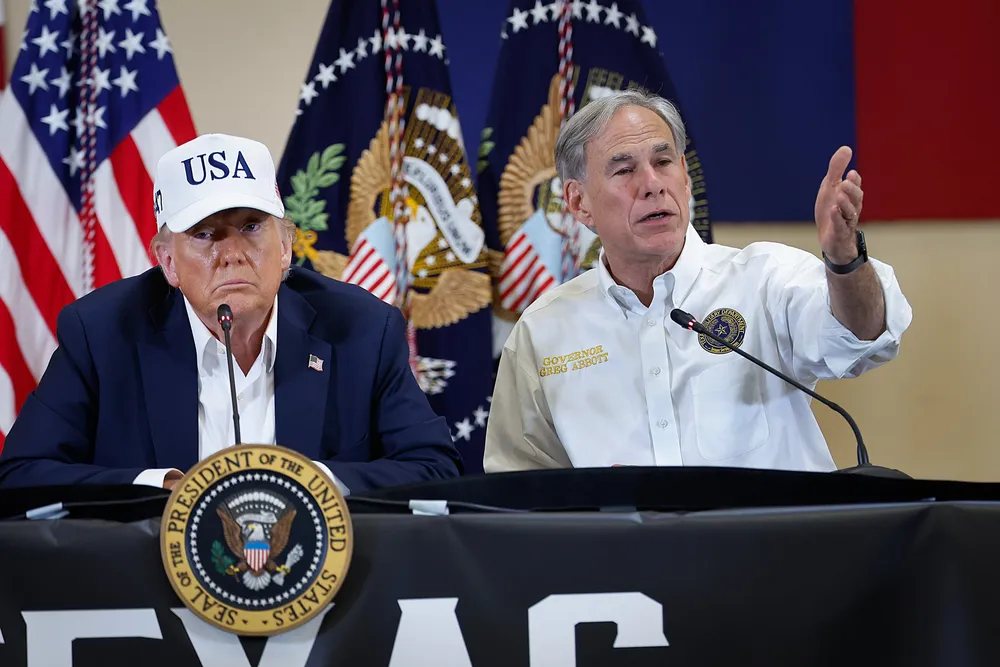Why Trump's anti-wind crusade may sputter in sector growth engine Texas
Pragmatic state leaders understand Texas will need every electron to meet surging energy demand, set to double by 2030

Donald Trump’s determined effort to asphyxiate US wind development appears destined to falter in sector pacesetter Texas despite its political alignment with the mercurial president.
Texas has been the sector’s growth engine over the last decade, accounting for as much as 49% of annual installations as recently as 2022.
With 43GW in place onshore and counting, it has more capacity than all but three countries – China, Germany, and India – aside from the US, and the next top four states combined: Illinois, Iowa, Kansas, and Oklahoma.
Business in Texas helped keep the US wind supply chain intact during the industry’s down cycles and turbocharged company profits in boom times.
Activity has slowed in the last two years due to competition with solar and transmission congestion while remaining best resource areas are farther from load centres. Still, Texas at the start of 2025 had 3GW, or 12% of the nation’s onshore capacity under construction or in advanced stages of development.
Data from Ercot, the main electric grid operator, suggests much more capacity could advance relatively soon. On 1 April, developers had interconnection agreements for almost 12GW of projects, while a further 22GW were seeking them and were well into regulatory reviews.
IF history is a guide, perhaps 30% of those projects will get built.
“I think we’ll find even without the federal tax credits wind will be priced competitive and available in long-term, fixed price contracts,” said Judd Messer, Texas vice-president of Advanced Power Alliance (APA), a leading clean energy trade association based in Austin, the state capital. “That still makes it attractive.”
Trump has won strong backing from Greg Abbott, a fellow Republican and popular three-term governor, and other top elected officials for his conservative policies on religious and social issues, and hardline initiatives targeting border security, illegal drug trafficking and street crime.
On energy, Abbott, in office 10 years, is supportive of his high-profile effort to further entrench fossil fuels as the cornerstone of US policy.
That is not surprising given Texas is the longstanding top crude oil and natural gas producing state. It has one of the largest global concentrations of facilities to process them into a wide range of products, along with intermediate chemicals which are the raw material for numerous industrial plants at home and overseas.
Texas also gave Trump more votes than any state in the 2024 election, helping boost him into the White House for a second term.
Abbott has not been a fan of wind or solar even as Texas became the nationwide leader in both technologies at utility scale under his watch. Some of his well-heeled supporters are fossil interests who are fomenting public opposition to green energy.
In 2021, Abbott was quick to incorrectly blame only wind and solar outages for partial collapse of the state’s main bulk power system during a powerful winter storm that caused at least 246 deaths and left millions without electricity for days in frigid temperatures.
Two years later, he signed into law a bill that created a $7.2bn state low-interest loan and grant programme to finance new on-demand, dispatchable generation, specifically natural gas, and upgrades for older plants.
Not so fast
Against that backdrop, it’s understandable why Trump would see Abbott as a willing partner to help kill clean energy. Nevertheless, his policy assault has put Abbott in a politically awkward position, even though he agrees with early sunset of federal tax credits.
Like most Texans, Abbott is a firm defender of the state’s sovereignty versus federal authority, a reflection of its unique culture and having been an independent republic for almost a decade starting in 1836.
Even after the Winter Storm Uri catastrophe, state policymakers rejected calls for federal oversight of Ercot, which operates independently because it is located entirely with Texas and lacks meaningful interconnection with the country’s two main grids. If it did, storm impacts likely would have been less severe.
Abbott doesn’t want White House interference in how his administration, the legislature, and Texas agencies manages the state’s affairs – and that includes energy resources.
Trump, the ultimate meddler, could find Abbott tough to digest as a prickly pear cactus, the official state plant, if he pushes too far on renewables.
Abbott is also a pragmatic politician. He understands Texas will need every electron to meet surging energy demand, which Ercot forecasts will double by 2030, even if Trump doesn’t get it on the national level.
Spiking wind and solar development is not winning political issue for him as Texas doesn’t have a stable of cost-effective alternatives that can come online as fast. Abbott is expected to seek a fourth term in 2026.
Natural gas is the power market leader but even with cheap state loans, new plant economics don’t always pencil out, in part because construction costs have soared due to supply chain issues. Abbott knows this.
Nor is Abbott ready to sacrifice a smidgen of the state’s economic future to move in lockstep with Trump’s personal distastes and erratic decision-making. He has spent too much time and effort over the past decade enhancing Texas’ business friendly reputation.
If wind and solar help the booming state economy, now the eighth largest in the world, by attracting more investment into the high growth manufacturing and technology sectors, and keep power prices competitive, that’s apparently fine by him.
Clean energy executives say Abbott’s focus now is encouraging “more of everything” for energy investment, which avoids use of the “all-of-the-above” phrase that conservative critics of wind and solar here dislike.
Notes APA’s Messer: “It’s electricity we can’t afford to lose”.
(Copyright)